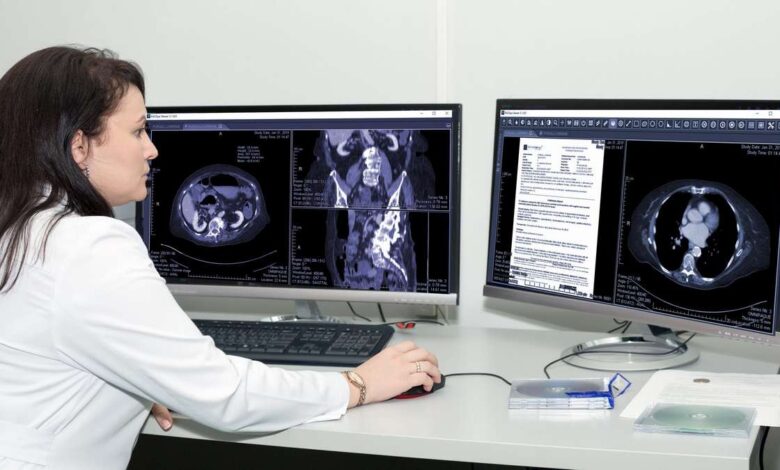3 Cloud PACS and RIS Integrations You Need

A cloud-based picture archiving and communication system (PACS) should integrate with a radiology information system (RIS). When the two systems are integrated, radiologists can work more efficiently because they will always have the patient information they need at their fingertips.
Unfortunately, not all cloud PACS play nicely with RIS, from an integration standpoint, which means you need to be careful when deciding on a solution.
When choosing a cloud PACS for your practice, any option you consider should offer the following RIS integrations to ensure smooth workflows and high productivity within your practice.
ADT Integration
Integration with admission, discharge and transfer (ADT) systems is critical for any cloud PACS, as they contain important demographic data about each patient, including their name, address, gender and age.
This data should be shared seamlessly between the PACS and the RIS, allowing physicians and radiologists to always have accurate information about the patients under their care. When information is updated in the RIS, it should automatically propagate through to the PACS without the user having to update it again manually. This is important and can help avoid confusion – especially if a patient changes their name due to marriage, or revises another aspect of their demographics.
Integration with an Image Viewer
It’s very convenient to be able to launch your PACS medical image viewer from your RIS. This can be achieved by inserting a URL inside your RIS that launches the viewer. Radiologists then simply click the hyperlink and the viewer initiates, rather than having to launch the PACS separately to locate the patient and the image they want to see.
So, when you evaluate cloud PACS vendors, ask them whether they can support RIS URL integration with an approved medical image viewer.
Results Integration
The results generated by medical imaging studies are typically stored in the RIS. However, it is much more convenient for radiologists to be able to view these results directly within the PACS since there are many occasions when they need more information about a patient’s condition. This functionality is possible with designed cloud PACS options.
Next, Ask for References
If your vendor claims they can offer the integrations listed above, it’s time to ask for recommendations. A cloud PACS provider with a good record of successfully implementing solutions should be able to refer you to a happy client, who can vouch for the quality of their service and support.
With a testimonial, you at least know if the vendor is offering you something they have done before, or if they will be learning as they go with you as their trial subject. This might be appropriate in certain customization scenarios, but for the basic integrations discussed in this article, it’s best to find a vendor with familiarity and happy customers.
Don’t Settle for Inadequate Integration
Many providers will tell you they can integrate their RIS PACS solutions, but they can’t tell you how they’ll do it or how long it will take. (They may not even be able to refer you to a satisfied client.) Do not settle for a vendor that can’t help you create the fully-integrated environment you need in order to allow your radiologists to work efficiently.
If a vendor can’t offer full integration between their PACS and your RIS, it’s time to move on.